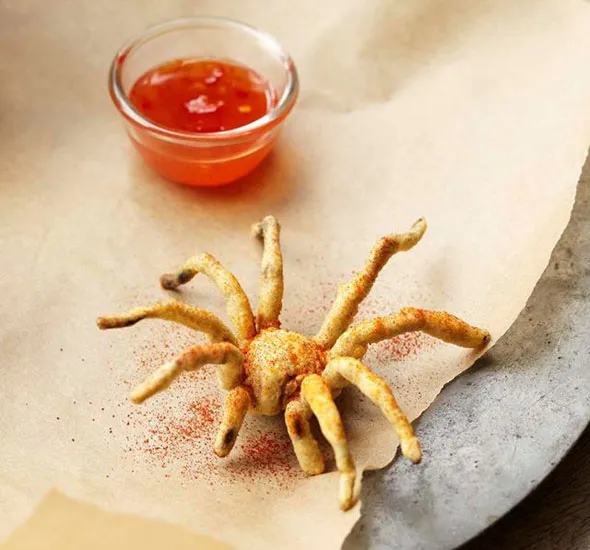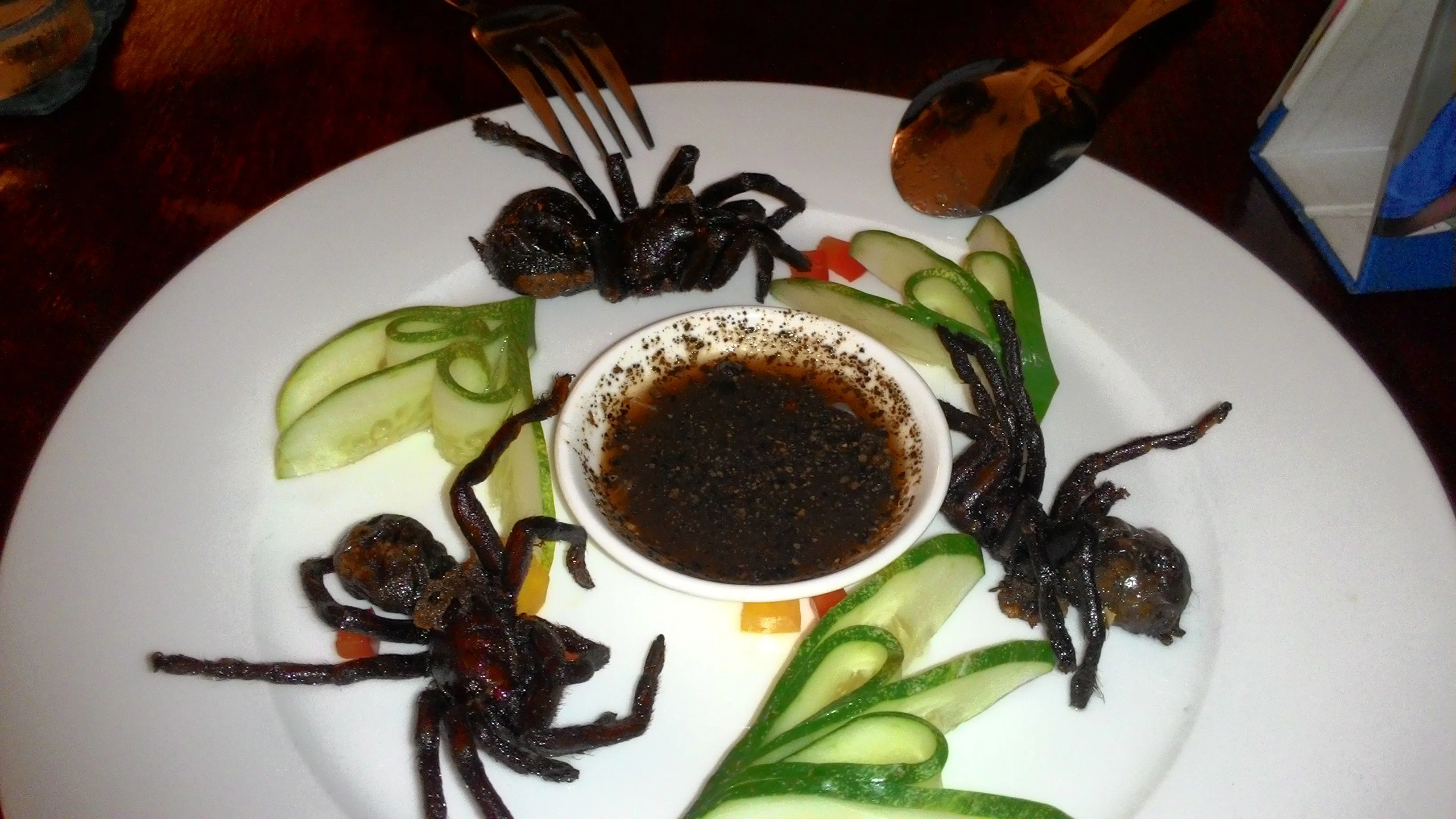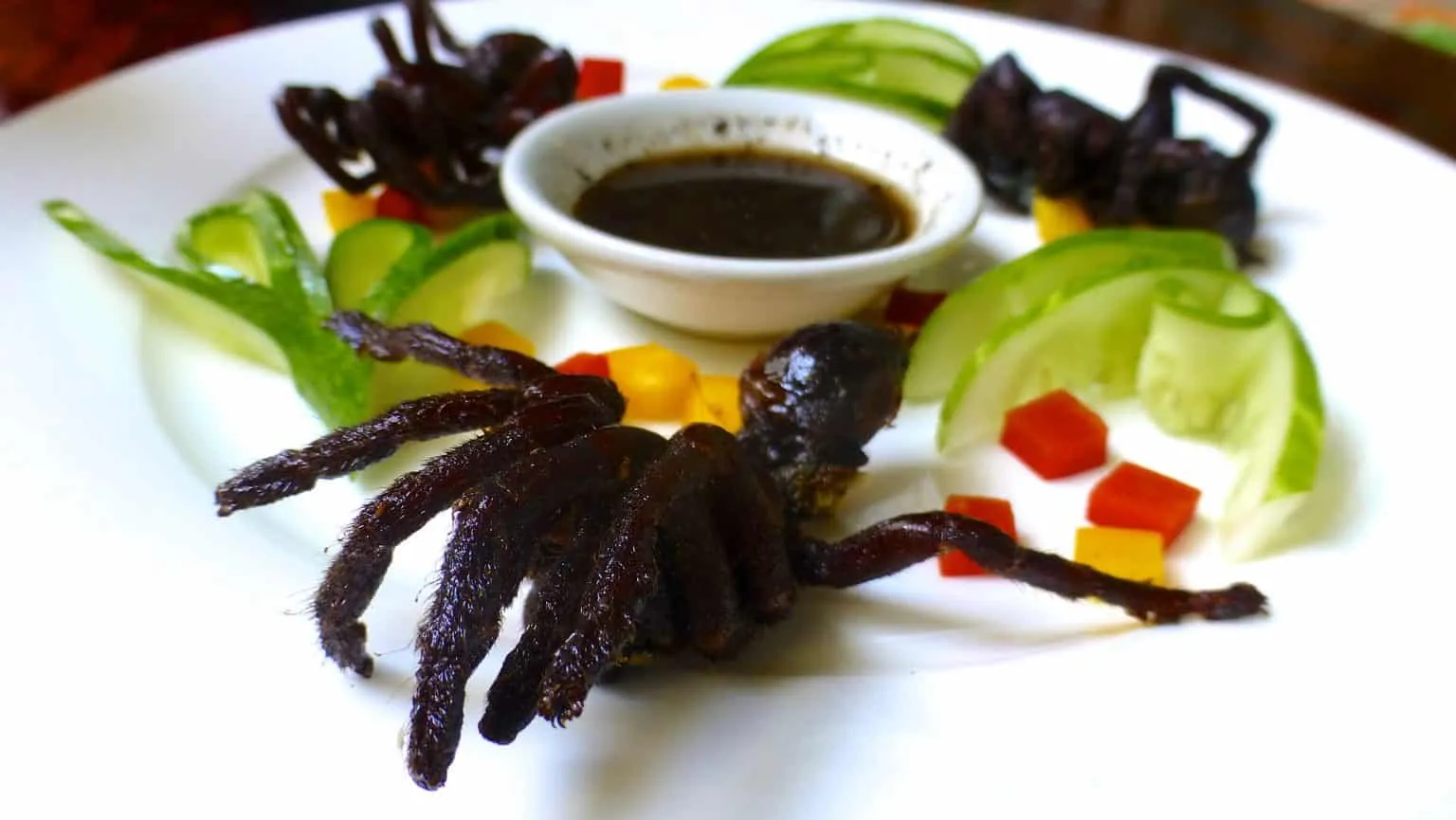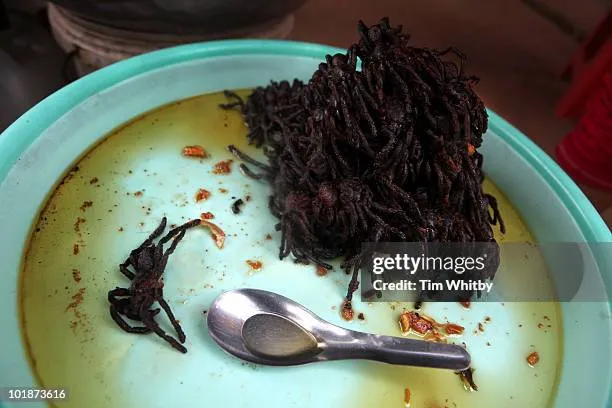What is Fried Tarantula?
Fried tarantula, a dish that might raise eyebrows, is a culinary adventure with a surprising history and appeal. This unique food item involves cooking a tarantula spider, often in a deep-fried style, resulting in a dish with a distinctive flavor and texture. It’s not just about the thrill of eating an insect; it’s a cultural experience that offers insights into different cuisines and food traditions around the world. While the concept may seem exotic to some, fried tarantulas have become a popular and respected food in certain regions, highlighting the diverse ways people interact with their environment and the foods it provides. The dish offers a blend of flavors and textures, challenging conventional tastes and expanding culinary horizons.
The Origins of Fried Tarantulas
The practice of eating fried tarantulas has roots in several cultures, particularly in Southeast Asia, with Cambodia being a prominent example. The origin stories are varied, often tied to necessity and resourcefulness. During times of scarcity, people turned to readily available sources of protein, including spiders and insects. Over time, these practices evolved into traditional dishes, becoming integrated into local cuisines and culinary practices. The preparation and consumption of fried tarantulas are now not just a matter of survival but also a part of cultural identity, with recipes and cooking methods passed down through generations, ensuring the survival of a unique culinary heritage.
Where to Find Fried Tarantulas

If you’re adventurous enough to try fried tarantula, Cambodia is one of the primary destinations. Siem Reap and Phnom Penh are among the cities where you can readily find them. Street food vendors and local markets offer this dish, providing a taste of authentic Cambodian cuisine. Beyond Cambodia, other regions with similar culinary traditions, such as parts of Thailand and Laos, might also offer fried tarantulas, though availability may vary. Additionally, with the rise of exotic food tourism, you might encounter this dish in specialty restaurants in larger cities worldwide, offering a unique culinary experience for the adventurous eaters.
Fact 1: The Crunchy Texture
One of the most enticing aspects of fried tarantula is its crunchy texture, a sensory experience quite unlike most other foods. This crunchiness comes from the way the tarantulas are prepared. Typically, they are deep-fried, which causes the exoskeleton to crisp up, providing a delightful contrast to the softer, more succulent inner parts. This texture is a key element of the dish’s appeal, offering a satisfying bite that many find addictive. The texture also plays a role in how the flavors are perceived, enhancing the overall dining experience.
How the Texture is Achieved
The crunchy texture is primarily achieved through deep-frying the tarantulas. The cooking process involves immersing the spiders in hot oil, which rapidly cooks the outer shell, creating a crispy exterior. The duration of frying and the temperature of the oil are crucial for achieving the perfect texture. Sometimes, the tarantulas are pre-seasoned or marinated, which also contributes to the overall crispness and flavor. The use of specific oils and the careful control of the cooking process are essential elements that ensure a consistent and appealing texture.
Why It’s Appealing

The appeal of the crunchy texture lies in its sensory satisfaction. It offers a contrast to softer foods, creating a more engaging and enjoyable eating experience. The satisfying crunch can be a highlight of the meal, and it often influences the overall perception of flavor and texture. For many, the crunchiness also symbolizes the quality and freshness of the preparation, as a well-fried tarantula suggests care and skill in the cooking process. This unique textural experience makes fried tarantula a standout dish.
Fact 2: The Unique Flavor Profile
Beyond the texture, the flavor of fried tarantula is another key element of its appeal. The taste is often described as a combination of nutty, earthy, and slightly seafood-like flavors. The specific flavor profile can vary depending on the preparation methods, the spider’s diet, and the seasonings used. Some compare it to crab or shrimp, while others highlight the distinct, earthy undertones. The unique taste is a major draw for those looking to expand their palates and experience something truly different. The flavors are complex and nuanced, offering a memorable taste sensation.
Describing the Taste
The taste of fried tarantula is difficult to categorize precisely, but it often includes notes of nuttiness, akin to almonds or hazelnuts, alongside an earthy base. There can also be hints of seafood, resembling crab or shrimp, which adds to the complex flavor profile. The legs and body parts have slightly different tastes; some find the abdomen to be the most flavorful. The seasonings used, such as salt, pepper, and garlic, play a significant role in enhancing the natural flavors, resulting in a balanced and appealing dish.
How the Tarantula is Prepared

The preparation of fried tarantulas significantly impacts their flavor. Typically, the spiders are cleaned, and sometimes their fangs and poisonous parts are removed. Then, they are often marinated in a mixture of spices, salt, and sometimes sugar, before being deep-fried. The frying process is crucial, as it not only affects the texture but also caramelizes the flavors. The spiders might also be cooked with ingredients like garlic, chilies, or herbs, adding layers of flavor that enhance the taste. Careful preparation is essential to achieve the desired flavor balance.
Fact 3: Nutritional Benefits
Fried tarantulas, like other insects, offer a surprisingly good nutritional profile. They are a source of protein, essential for muscle building and overall health. Additionally, they contain various minerals and nutrients that contribute to a balanced diet. While they may not be a primary source of vitamins, the protein and other micronutrients present make them a viable and healthy food choice for many communities. Including insects in the diet can offer an eco-friendly and sustainable way to obtain essential nutrients.
Protein Content
Tarantulas, like many insects, are a source of high-quality protein. Protein is a crucial nutrient for building and repairing tissues, as well as supporting various bodily functions. The protein content in fried tarantulas is comparable to that found in other protein-rich foods like chicken or fish. This makes them an excellent alternative source of protein, particularly in regions where access to conventional protein sources might be limited. The high protein content contributes significantly to their nutritional value.
Other Nutritional Advantages

Besides protein, fried tarantulas provide other nutritional benefits. They contain various minerals, such as iron and zinc, which are essential for health. They may also contain fats, depending on the preparation method, and in some cases, these fats can be healthy unsaturated fats. While the specific nutrient composition can vary based on the species and preparation, overall, fried tarantulas can contribute to a balanced diet, providing a range of essential nutrients that support overall health and well-being.
Fact 4: Cultural Significance
The consumption of fried tarantulas holds significant cultural value in several societies. It’s not merely a food source but also a symbol of cultural identity, resilience, and adaptation to the environment. These dishes reflect local traditions, cooking methods, and ways of life, passed down through generations. Experiencing such foods provides insights into a culture’s history, values, and daily life, offering a deeper understanding of the community. This cultural aspect adds another layer of appreciation to the dining experience, making it a celebration of local customs.
In Cambodia
In Cambodia, particularly in the area of Skun, fried tarantulas are an integral part of the local cuisine and culture. The dish became popular during times of famine, and it has since become a beloved delicacy. Street food vendors and local restaurants proudly serve fried tarantulas, preserving a culinary heritage. The preparation methods, recipes, and the act of eating them are central to local identity. It’s a part of everyday life, a source of pride, and a testament to the community’s ability to thrive in challenging conditions.
The Role in Local Cuisine

Fried tarantulas play an important role in the local cuisine of regions where they are consumed. They are often considered a special treat and are integrated into daily meals. They are a significant part of the diet, representing cultural values and tastes. Beyond just a dish, fried tarantulas support local economies and contribute to tourism, attracting visitors interested in experiencing authentic Cambodian cuisine. This cultural significance helps preserve traditions and boosts community pride, keeping the culinary heritage alive.
Fact 5: The Experience
Eating fried tarantula is not just about the taste; it’s an experience that engages all the senses. From the moment you see the dish to the final bite, it offers a unique and memorable culinary journey. The visual aspect, the aroma, the texture, and the flavor all combine to create a complex and fascinating experience. For many, it’s an opportunity to step outside their comfort zones, try something new, and connect with different cultures. It’s a thrilling experience that can spark conversations and create lasting memories.
Sensory Aspects
The sensory aspects of eating fried tarantula are multifaceted. The sight of the prepared spider is quite distinctive. The smell often includes the aroma of frying oil with a hint of spices, and the sound of crunching with each bite adds to the experience. The texture changes as you eat, from the crunchy exterior to the softer interior parts. All these sensory elements combine to create a compelling and enjoyable experience. It’s a full-sensory adventure.
Tips for First-Timers

If you’re considering trying fried tarantula for the first time, here are a few tips to enhance your experience. Start slowly, try a small piece first to get accustomed to the texture and flavor. Approach it with an open mind and embrace the experience. Consider the preparation methods, as different recipes result in varied tastes. Look for reputable vendors known for their quality and hygiene. Don’t be afraid to ask questions about the dish, and most importantly, enjoy the unique culinary adventure. Be adventurous and savor the moment.
